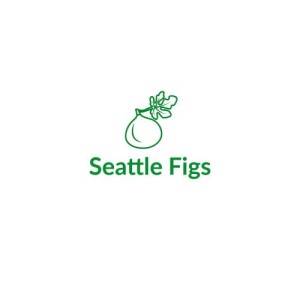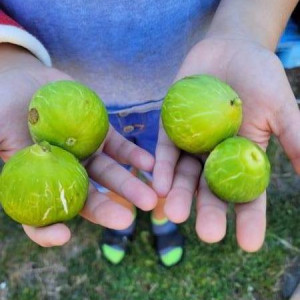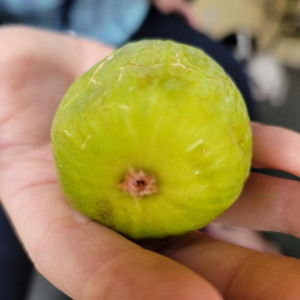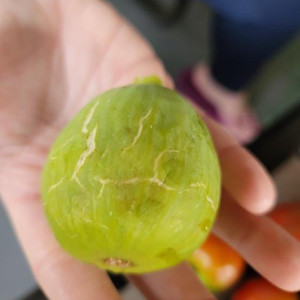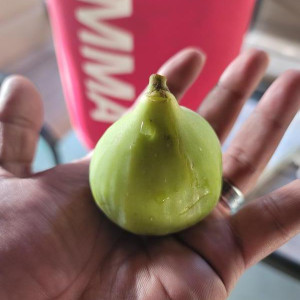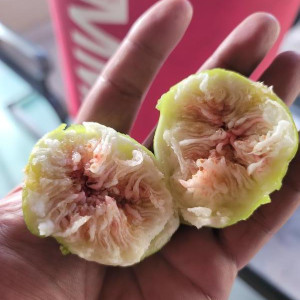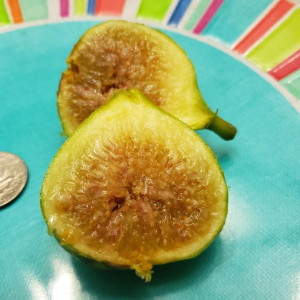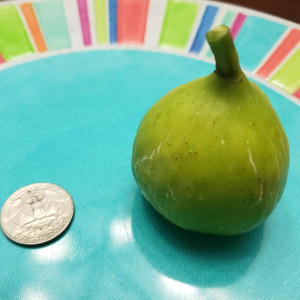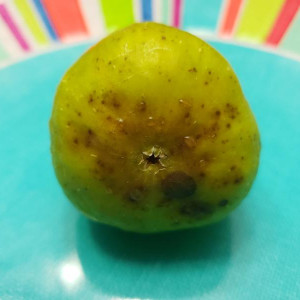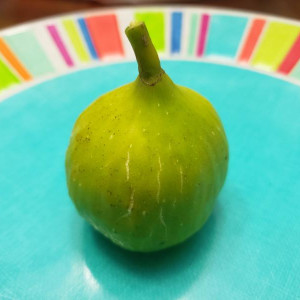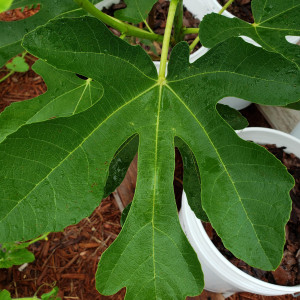This site contains affiliate links for which I may be compensated.
White Marseilles
White Marseilles Information
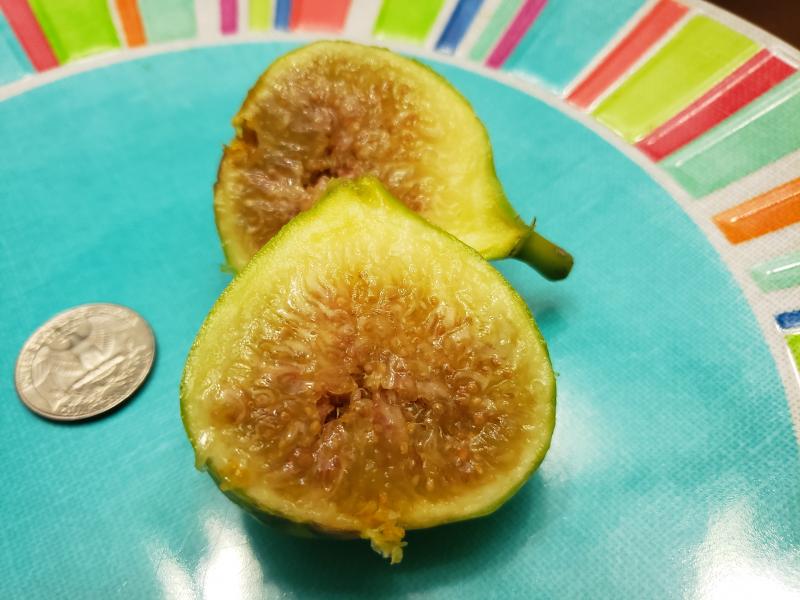

-
Possible Synonyms / AKA:
WM, Argentina, Belleclare #12,
Blanche, Blanche de Versailles, Blanche d'Argenteuil, Blanche Fleur, Blanche Hative, Blanche Ronde, Blanchette, Blanquo, Cape White, Fico Bianco,Fig de Marseille, Fig of Athens, Fig of Naples,Figue Blanche, Ford's Seedling, Genoa, Grosse Blanche Ronde,Italian Honey, Lipari,Madeleine Marseilles, Marseillaise, Marseillaise White, Marseilles, Pocock, Quarteria, Raby Castle, Royale,Tena? Versilles, Vigasotte Bianco, White Marseilles, White Naples, White Standard,Lattarula,Marsellaise -
Introduced By:
-
Origin:
France -
Main Flavor Group:
Honey- offers a delicate and smooth sweetness with a warm, golden richness. It brings a soft, floral depth to the flavor, creating a naturally sweet and mellow experience. -
Family Group:
-
Fig Type:
Common - Self fertile and will grow anywhere conditions are suitable -
Cold Hardy:
Yes -
Container Variety:
Yes -
Easy Rooting:
N/A -
Main Season:
early -
Availability:
Excellent -
Breba Crop:
Yes -
Seed Crunch:
mild -
Eye:
small -
Skin Toughness:
soft -
Fruit Size:
Medium to large -
Rain Resistance:
Low -
Tree Vigor:
Medium -
External Links:
https://www.facebook.com/rigo.amador.96/videos/1524262071252732
https://www.ourfigs.com/forum/figs-home/415542-‘white-marseilles'
https://www.ourfigs.com/forum/figs-home/649599-agristarts-and-the-white-marseilles-not-fiasco-where-it-stands
https://www.ourfigs.com/forum/figs-home/516060-two-differing-white-marseilles-plants
https://www.ourfigs.com/forum/figs-home/210695-white-marseilles-ends-the-season
http://figs4funforum.arghchive.com/post/marseilles-white-82614-7055457
http://figs4funforum.arghchive.com/post/white-marseilles-best-producer-7474377
http://figs4funforum.arghchive.com/post/lattarulla-same-as-white-marseilles-7422373
https://www.ourfigs.com/forum/figs-home/649599-agristarts-and-the-white-marseilles-not-fiasco-where-it-stands
Description
This is the variety considered as the "Monticello White Marseilles" with 3-5 wide lobes on the leaves. Unlike Tena which has long and finger like lobes, smaller in size and white/pink-ish flesh. The "Possible Synonyms" and even the "Condit Monograph" (highlighted in green) is all mixed up due to so many researchers finding similar trees all over the world and with different climates that easily has caused confusion when it can be simply identified by the look of the leaves and figs.
Condit Monograph
As Blanche: (syns. Blanche d'Argenteuil, Blanche Ronde, Grosse Blanche Ronde, Blanche Hâtive, Blanquo, Argentine, Blanche Fleur, Royale, Versailles, Blanquette and Madeleine of some authors, Marseilles, White Marseilles, Marseillaise White, White Naples, Pocock, Ford's Seedling, Raby Castle, White Standard, White Smyrna , Quarteria, Vigasotte Bianco). In 1700, Tournefort described a fig variety as La Grosse Blanche Ronde. Garidel (1715) quoted this account, but expressed doubt that it was the same as the one called Blanquo Communo, grown in some parts of France. Duhamel (1755) also quoted Tournefort, and designated the variety as Figue Blanche. In his ''Nouveau'' work of 1809, Duhamel again quoted Tournefort, as well as Garidel, and stated that the fig known at Paris as Figue d'Argenteuil was only a subvariety of Figue Blanche of Provence, the differences between the two being minor, and due to climatic influences. The fig described and illustrated in color by Carbon (1865a) as Figue Blanche à Peau Verte may be the same variety. Other accounts of this fig as Blanche, Blanche d'Argenteuil, Blanche Ronde, or Grosse Blanche Ronde are by Merlet (1667), Liger (1702), Weston (1770), Knoop (1771), La Brousse (1774), Rozier (1781-1805); Mirbel (1802-1806), Lamarck (1783-1817), Bory DE Saint Vincent (1824), Noisette (1821, 1829), Couverchel (1839), Poiteau (1838-1846), Dochnahl (1855), Duchartre (1857), Forney (1863), Lhérault (1872), Simon-Louis (1895), Schneider (1902), Juignet (1909), Nomblot (1913), Mazieres (1920), Leclerc (1925), Société Nationale d'Horticulture DE France (1928), A. Riviere (1928), G. Riviere (1930), Delplace (1933), Delbard (1947), and Simonet et al. (1945). Figue Royale was described by Bernard (1787), Duhamel (1809), Bory DE Saint Vincent (1824), and Noisette (1829), with Versailles as a synonym. On the other hand, it was described as Versailles, with or without the synonym Royale, by Couverchel (1839), Duchartre (1857), Du Breuil (1876), Hogg (1866), Soc. Pomol. DE France (1887, 1947), Barron (1891), Eisen (1901, Bois (1928), Blin (1942), and Evreinoff (1947). Eisen regarded Blanche and Versailles as distinct, but later authors, such as Nomblot, Soc. Nat. d'Hort. DE France (1928), and Simonet et al., treat them as the same variety. See Rolland (1914) for synonymy. Descriptions of this variety as White Marseilles are given by Brookshaw (1812), Baxter (1820), Sawyer (1824), Lindley (1831), Rogers (1834), Holley (1854), M'Intosh (1855), Thompson (1859), Hogg (1866), G. S. (1867, 1869), Barron (1868c, 1891), Rivers (1873), Coleman (1887b), Lelong (1890), Wythes (1890a), Massey (1893), Burnette (1894), Wright (1895), Forrer (1894), Eisen (1885, 1897, 1901), Thomas (1902), Ward (1904), Starnes (1903, 1907), Royal Hort. Society (1916), B. A. Bunyard (1925, 1934), Cook (1925), Arnold (1926), Fruit-Grower (1936), Condit (1947), and Preston (1951). Illustrations in color are by Duhamel (1809), Brookshaw (1812), Noisette (1821), and Wright (1895). Illustrations in Black and white are by Poiteau, Eisen (1901, fig. 75), Bois, Société' Nationale d'Horticulture DE France, Starnes, Bunyard (1934), Simonet, and Condit (1941a, fig. 2, E). The name White Marseilles became attached to a fig that Brookshaw described and illustrated in color in 1812 of fruit gathered by himself from the original tree at the Archbishop of Canterbury's palace at Lambeth. This tree was generally believed to have been planted by Cardinal Pole during the reign of Henry the Eighth. Another account, that of Baxter (1820), stated that a fig tree at Oxford was introduced by a Mr. Pocock, hence the name Pocock's fig; fruit exhibited on August 17, 1819, proved to be that of the White Marseilles. John Wright (1895) referred to a large tree of White Marseilles with a trunk 6 feet 9 inches in circumference 2 feet above the ground. Sawyer, in 1824, reported that the fig he named Ford's Seedling was sometimes called the Pocock, but was more properly designated White Marseilles. Various authors, including Lindley, Thompson, and Hogg, described White Marseilles, with Figue Blanche as a synonym. The description and illustration by Eisen in 1901 of Marseillaise White are regarded here as properly referring to Blanche. White Genoa, as pointed out by Eisen, is distinct from White Marseilles. According to Bunyard, Marseilles is a well established favorite in England, thriving both indoors and on walls outside. Cape White, described by Davis (1928), Burger and DE Wet (1931), and Gayner (1949), as a ''well-known fig'' of South Africa, appears to be very similar to, if not identical with, Blanche. In southern India the Marseilles is said by Naik (1949) to ''crop well on the hills over about 5,000 feet elevation.'' Blanche is extensively cultivated in Provence, mostly as a drying fig. Near Paris, where Blanche d'Argenteuil has been cultivated for many centuries, elaborate methods of culture as described by Lhérault, Juignet, and others, have been followed for the production of the first crop. A famous tree of this variety at Roscoff, France, planted by the Capuchins in 1621, has been described by Lambertye (1874), Blanchard (1878, 1879), and by Martinet and Lesourd (1924). In 1924, the branches covered an area of 600 square meters; they were supported by 80 pillars, many of granite. The annual crop was reported to be 400 dozen figs. The variety designated ''Lemon'' in most of the southeastern United States is identical with Blanche. See descriptions of Lemon by Starnes and Monroe (1907) and by Gould (1923). At Crisfield, Maryland, and at Cape Charles, Virginia, trees of Marseilles are neither vigorous nor productive. Near Portland, Oregon, this variety ranks first among the figs tested for home and orchard planting. A Portland nurseryman, B. R. Amend, in his catalogue for the season of 1942, describes this variety as Lattarula (Italian honey fig), a name suggested by some visitors from Italy. As described elsewhere, however, the Italian variety Lattarola has red, not white, pulp. This variety has long been grown in California, mostly under the name White Marseilles. According to Shinn (1915), White Marseilles was growing at Santa Clara and Santa Barbara before the discovery of gold. As determined by Saunders (1889), White Smyrna proved to be the same variety. It was apparently this fig which Lelong (1890, 1892) reported as found growing at Downey, Los Angeles County, where there was a ''very large fig orchard, devoted to the Marseillaise, a small, white, sweet fruit.'' But Eisen (1901) mentioned that an orchard, probably the same one as above, had been dug up on account of the figs souring so badly. No other commercial plantings have been found, but dooryard trees are common, especially in southern California. It was grown and tested at the various California stations between 1893 and 1903, and an analysis of fruit grown at Fresno was recorded by Colby in 1894. According to Eisen, Versailles was once grown extensively by Felix Gillet, Nevada City; no records, however, have been found of its distribution or planting under that name. Three varieties introduced into California in the Chiswick collection all proved to be identical with Marseilles; they are P.I. Nos. 18,864, Vigasotte Bianco; 18,866, Quarteria; and 18,904, Figue Blanche. Eisen appears to be the only author who has described the first two, and he has listed them as distinct varieties. Except for minor characters, his account of the fruit coincides closely with that of Blanche given here. Trees of Blanche are slow-growing, fairly dense, with green terminal buds. Leaves medium, 3- to 5-lobed; surface glossy above; upper sinuses of medium depth, narrow, lower sinuses shallow; base subcordate, sometimes Auricled ; margins crenate; mature blades often affected by necrotic spots (plate 13). The following description of fruit is from specimens grown at Riverside since 1930.
Other Comments
Large almost round fruit, slightly ribbed. Pale green to yellow/white when mature. Translucent flesh which is sweet, should be better known. One crop, Mid-September. Small green fig, yellow, pink, very sweet flesh, very good taste and fragrant, at the same time firm and melting, recommended for drying. Productive and rustic fig tree (France). The fig is smaller with a yellowish green skin and a pink or red interior. It is very sweet and firm. The leaves are a very beautiful dark green with contrasting lighter colored midrib and veins. Main crop starts in July, however this variety can be affected by changes in summer heat and drop figs until the weather cools.
As Blanche: (syns. Blanche d'Argenteuil, Blanche Ronde, Grosse Blanche Ronde, Blanche Hâtive, Blanquo, Argentine, Blanche Fleur, Royale, Versailles, Blanquette and Madeleine of some authors, Marseilles, White Marseilles, Marseillaise White, White Naples, Pocock, Ford's Seedling, Raby Castle, White Standard, White Smyrna , Quarteria, Vigasotte Bianco). In 1700, Tournefort described a fig variety as La Grosse Blanche Ronde. Garidel (1715) quoted this account, but expressed doubt that it was the same as the one called Blanquo Communo, grown in some parts of France. Duhamel (1755) also quoted Tournefort, and designated the variety as Figue Blanche. In his ''Nouveau'' work of 1809, Duhamel again quoted Tournefort, as well as Garidel, and stated that the fig known at Paris as Figue d'Argenteuil was only a subvariety of Figue Blanche of Provence, the differences between the two being minor, and due to climatic influences. The fig described and illustrated in color by Carbon (1865a) as Figue Blanche à Peau Verte may be the same variety. Other accounts of this fig as Blanche, Blanche d'Argenteuil, Blanche Ronde, or Grosse Blanche Ronde are by Merlet (1667), Liger (1702), Weston (1770), Knoop (1771), La Brousse (1774), Rozier (1781-1805); Mirbel (1802-1806), Lamarck (1783-1817), Bory DE Saint Vincent (1824), Noisette (1821, 1829), Couverchel (1839), Poiteau (1838-1846), Dochnahl (1855), Duchartre (1857), Forney (1863), Lhérault (1872), Simon-Louis (1895), Schneider (1902), Juignet (1909), Nomblot (1913), Mazieres (1920), Leclerc (1925), Société Nationale d'Horticulture DE France (1928), A. Riviere (1928), G. Riviere (1930), Delplace (1933), Delbard (1947), and Simonet et al. (1945). Figue Royale was described by Bernard (1787), Duhamel (1809), Bory DE Saint Vincent (1824), and Noisette (1829), with Versailles as a synonym. On the other hand, it was described as Versailles, with or without the synonym Royale, by Couverchel (1839), Duchartre (1857), Du Breuil (1876), Hogg (1866), Soc. Pomol. DE France (1887, 1947), Barron (1891), Eisen (1901, Bois (1928), Blin (1942), and Evreinoff (1947). Eisen regarded Blanche and Versailles as distinct, but later authors, such as Nomblot, Soc. Nat. d'Hort. DE France (1928), and Simonet et al., treat them as the same variety. See Rolland (1914) for synonymy. Descriptions of this variety as White Marseilles are given by Brookshaw (1812), Baxter (1820), Sawyer (1824), Lindley (1831), Rogers (1834), Holley (1854), M'Intosh (1855), Thompson (1859), Hogg (1866), G. S. (1867, 1869), Barron (1868c, 1891), Rivers (1873), Coleman (1887b), Lelong (1890), Wythes (1890a), Massey (1893), Burnette (1894), Wright (1895), Forrer (1894), Eisen (1885, 1897, 1901), Thomas (1902), Ward (1904), Starnes (1903, 1907), Royal Hort. Society (1916), B. A. Bunyard (1925, 1934), Cook (1925), Arnold (1926), Fruit-Grower (1936), Condit (1947), and Preston (1951). Illustrations in color are by Duhamel (1809), Brookshaw (1812), Noisette (1821), and Wright (1895). Illustrations in Black and white are by Poiteau, Eisen (1901, fig. 75), Bois, Société' Nationale d'Horticulture DE France, Starnes, Bunyard (1934), Simonet, and Condit (1941a, fig. 2, E). The name White Marseilles became attached to a fig that Brookshaw described and illustrated in color in 1812 of fruit gathered by himself from the original tree at the Archbishop of Canterbury's palace at Lambeth. This tree was generally believed to have been planted by Cardinal Pole during the reign of Henry the Eighth. Another account, that of Baxter (1820), stated that a fig tree at Oxford was introduced by a Mr. Pocock, hence the name Pocock's fig; fruit exhibited on August 17, 1819, proved to be that of the White Marseilles. John Wright (1895) referred to a large tree of White Marseilles with a trunk 6 feet 9 inches in circumference 2 feet above the ground. Sawyer, in 1824, reported that the fig he named Ford's Seedling was sometimes called the Pocock, but was more properly designated White Marseilles. Various authors, including Lindley, Thompson, and Hogg, described White Marseilles, with Figue Blanche as a synonym. The description and illustration by Eisen in 1901 of Marseillaise White are regarded here as properly referring to Blanche. White Genoa, as pointed out by Eisen, is distinct from White Marseilles. According to Bunyard, Marseilles is a well established favorite in England, thriving both indoors and on walls outside. Cape White, described by Davis (1928), Burger and DE Wet (1931), and Gayner (1949), as a ''well-known fig'' of South Africa, appears to be very similar to, if not identical with, Blanche. In southern India the Marseilles is said by Naik (1949) to ''crop well on the hills over about 5,000 feet elevation.'' Blanche is extensively cultivated in Provence, mostly as a drying fig. Near Paris, where Blanche d'Argenteuil has been cultivated for many centuries, elaborate methods of culture as described by Lhérault, Juignet, and others, have been followed for the production of the first crop. A famous tree of this variety at Roscoff, France, planted by the Capuchins in 1621, has been described by Lambertye (1874), Blanchard (1878, 1879), and by Martinet and Lesourd (1924). In 1924, the branches covered an area of 600 square meters; they were supported by 80 pillars, many of granite. The annual crop was reported to be 400 dozen figs. The variety designated ''Lemon'' in most of the southeastern United States is identical with Blanche. See descriptions of Lemon by Starnes and Monroe (1907) and by Gould (1923). At Crisfield, Maryland, and at Cape Charles, Virginia, trees of Marseilles are neither vigorous nor productive. Near Portland, Oregon, this variety ranks first among the figs tested for home and orchard planting. A Portland nurseryman, B. R. Amend, in his catalogue for the season of 1942, describes this variety as Lattarula (Italian honey fig), a name suggested by some visitors from Italy. As described elsewhere, however, the Italian variety Lattarola has red, not white, pulp. This variety has long been grown in California, mostly under the name White Marseilles. According to Shinn (1915), White Marseilles was growing at Santa Clara and Santa Barbara before the discovery of gold. As determined by Saunders (1889), White Smyrna proved to be the same variety. It was apparently this fig which Lelong (1890, 1892) reported as found growing at Downey, Los Angeles County, where there was a ''very large fig orchard, devoted to the Marseillaise, a small, white, sweet fruit.'' But Eisen (1901) mentioned that an orchard, probably the same one as above, had been dug up on account of the figs souring so badly. No other commercial plantings have been found, but dooryard trees are common, especially in southern California. It was grown and tested at the various California stations between 1893 and 1903, and an analysis of fruit grown at Fresno was recorded by Colby in 1894. According to Eisen, Versailles was once grown extensively by Felix Gillet, Nevada City; no records, however, have been found of its distribution or planting under that name. Three varieties introduced into California in the Chiswick collection all proved to be identical with Marseilles; they are P.I. Nos. 18,864, Vigasotte Bianco; 18,866, Quarteria; and 18,904, Figue Blanche. Eisen appears to be the only author who has described the first two, and he has listed them as distinct varieties. Except for minor characters, his account of the fruit coincides closely with that of Blanche given here. Trees of Blanche are slow-growing, fairly dense, with green terminal buds. Leaves medium, 3- to 5-lobed; surface glossy above; upper sinuses of medium depth, narrow, lower sinuses shallow; base subcordate, sometimes Auricled ; margins crenate; mature blades often affected by necrotic spots (plate 13). The following description of fruit is from specimens grown at Riverside since 1930.
Breba crop fair; figs medium or above, up to 2 inches in length and 1-7/8 inches in diameter, turbinate, with broad, rounded apex; neck thick and short, or absent; stalk slightly curved, 1/4 inch long; ribs few, inconspicuous eye medium, open, scales chaffy, erect at maturity; flecks very small and inconspicuous, green rather than white; bloom delicate; color light green; pulp and meat white; seeds large, conspicuous; quality fair to good.
Second-crop figs much the same as brebas, except for smaller size; average weight 30 grams; shape spherical to oblate, mostly without neck; stalk up to 1/2 inch long. Flavor fairly rich and sweet; quality fair as a fresh fruit, of light weight and poor quality when dried; susceptible to fruit spoilage. (Plates 8; 26, A.)
Caprification has little effect upon size and color, either of skin or pulp. Figs produced at Portland, Oregon, and in coastal districts of California, are usually larger in size and more oblate in shape than those just described. Near Paris the second crop of Blanche matures in warm seasons only.Other Comments
Large almost round fruit, slightly ribbed. Pale green to yellow/white when mature. Translucent flesh which is sweet, should be better known. One crop, Mid-September. Small green fig, yellow, pink, very sweet flesh, very good taste and fragrant, at the same time firm and melting, recommended for drying. Productive and rustic fig tree (France). The fig is smaller with a yellowish green skin and a pink or red interior. It is very sweet and firm. The leaves are a very beautiful dark green with contrasting lighter colored midrib and veins. Main crop starts in July, however this variety can be affected by changes in summer heat and drop figs until the weather cools.
This variety is common in Provence and has been grown in France for centuries. It is also traditionally part of the 13 Provencal dishes of Christmas.
In Provence, the Christmas Eve dinner is called ''le gros souper''. It's a meal of abstinence before midnight Mass. It consists of a succession of fish and vegetable dishes.
The dinner ends with the 13 desserts. In Nice there is always dried fruits and nuts, one or two kinds of nougat and a flat yeast cake made with olive oil, called ''pompe a l'huile''. Fruits like figs, grapes and melons are put in the cellar at harvest time so they became semi-dried and very sweet by Christmas.
The number 13 represents the 12 Apostles and Christ. This is a Provencal tradition that occurs nowhere else in France.
From jmrtsus 4-7-2020:
From Dr. Condit's Monograph
"The name White Marseilles became attached to a fig that Brookshaw described and
illustrated in color in 1812 of fruit gathered by himself from the original tree at the
Archbishop of Canterbury’s palace at Lambeth. This tree was generally believed to
have been planted by Cardinal Pole during the reign of Henry the Eighth." The problem with the monograph is Cardinal Pole was not the Archbishop until 1556....9 years AFTER Henry's death! He was not even in the UK from 1532 until 1554. So even Dr. Condit's work has holes in this trees history.
illustrated in color in 1812 of fruit gathered by himself from the original tree at the
Archbishop of Canterbury’s palace at Lambeth. This tree was generally believed to
have been planted by Cardinal Pole during the reign of Henry the Eighth." The problem with the monograph is Cardinal Pole was not the Archbishop until 1556....9 years AFTER Henry's death! He was not even in the UK from 1532 until 1554. So even Dr. Condit's work has holes in this trees history.
Thomas Jefferson's passion for figs helped propagate this variety in Virginia and possibly elsewhere in the United States.1 In 1809, Jefferson wrote to Dr. William Thornton, a close friend and architect of the Capitol in Washington: "I will take some occasion of sending you some cuttings of the Marseilles fig, which I brought from France with me, & is unquestionably superior to any fig I have ever seen."2 He also shared Marseilles figs with John Hartwell Cocke, owner of Bremo Plantation along the James River. Cocke sent his slave Jesse to Monticello in 1817 to collect some plants.3
In general, Jefferson had success with growing figs in Virginia.4 The plant was sometimes difficult to harvest in climates colder than the Deep South, so Jefferson provided protective covering for the plants and planted them in the "submural beds" at the base of the kitchen garden wall, which afforded the warm micro-climate necessary to bear fruit. He planted them as early as 1769 in the orchard and included figs in a 1774 South Orchard plan.5a, 5b, 5c
The Marseilles fig is a half- Hardy , Deciduous shrub that produces small, greenish-white fruits in late summer.
Primary Source References
1787 March 3-June 10. (Notes of a Tour into the Southern Parts of France, &c.). "The most delicate figs known in Europe are those growing about this place, called figues Marcelloises, or les veritables Marcelloises, to distinguish them from others of inferior quality growing here. These keep any length of time. All others exude a sugar in the spring of the year and become sour. The only process for preserving them is drying them in the sun, without putting any thing to them whatever."6 1789 May 7. (Jefferson to William Drayton). "Plants sent by Mr. Cathalan. 44. figuiers, DE 3. especes. [the Marseilles fig is admitted to be the best in the world]."7 ca. 1789 September 1. (List of Baggage Shipped by Jefferson from France). "1. white fig. (Angelic fig) ... 1. large fig. ... 2. white fig."8 1809 November 16. (William Thornton to Jefferson). "I am much obliged by your kind intention of sending me some of the fine Marseilles Fig ...."9 1810 June 8. (William Thornton to Jefferson). "I am very glad that the young Fig trees arrived safe, and also that the former ones were still alive."10 1814 October 11. (Isaac A. Coles to Jefferson). "mrs Singleton from whom I received it, is very desirous of getting a few plants of the Marseilles Fig to Carry back with her to Carolina, where it is not known at all, & where the climate will Suit it So well ...."11 1817 March 27. (John Hartwell Cocke). "Sent to Monticello for some Marseilles figs ...."12 - Peggy Cornett, n.d.
The White Marseille has had in history many names. The most common is Blanche but due to the Thomas Jefferson connection the name most common name here in the USA has been the White Marseilles. We also added Lattarula, Lemon, and Italian Honey to the list of synonyms. So Blanche, White Marseille, Lattarula, Lemon and Italian Honey are all actually the same figs. Along with a list of many more synonyms claimed in history shown in the quote from Condit. -jmrtsus
As to taste under the right conditions of mild winters, warm summers and not much rain will produce a wonderful sweet, rich tasting fig. None of mine made it to the house this year and is the only fig tree I have two of. I found it difficult to wait for perfectly ripe fruit. It is a slow grower in SE TN but this was the first year for more than a few fruit and it will only get better. I really like this fig but it did have a few brebas this year that was as said above not so good. -jmrtsus
Acquiring an actual White Marseille fig takes a little work. The name White Marseille is a trigger to be cautious in buying as thousands of the fig Tena have been erroneously sold as White Marseille for years, Tena is easily ID'ed as it has a leaf with 5 long fingers. Not even similar to a true White Marseille leaf. I have correctly relabeled my so called "White Marseille" as Tena and one labeled as a Lattarula and a true White Marseille to Blanche. Try to locate cuttings or plants grown from proven plants. Almost all fig trees in the commercial retail markets are Tissue Culture (T/C) produced plants and the primary vendors of the mismarked Tena plants. I would pass on those labeled White Marseille and buy from an individual as a Lattarula or even a T/C plant labeled Lattarulla as it has proven to be correct. -jmrtsus
If you'd like your banner to be shown here and throughout Fig Database, send us a message.
Photos Add Your Image
YouTube Videos
No Videos Found
Member Descriptions Add Your Description

